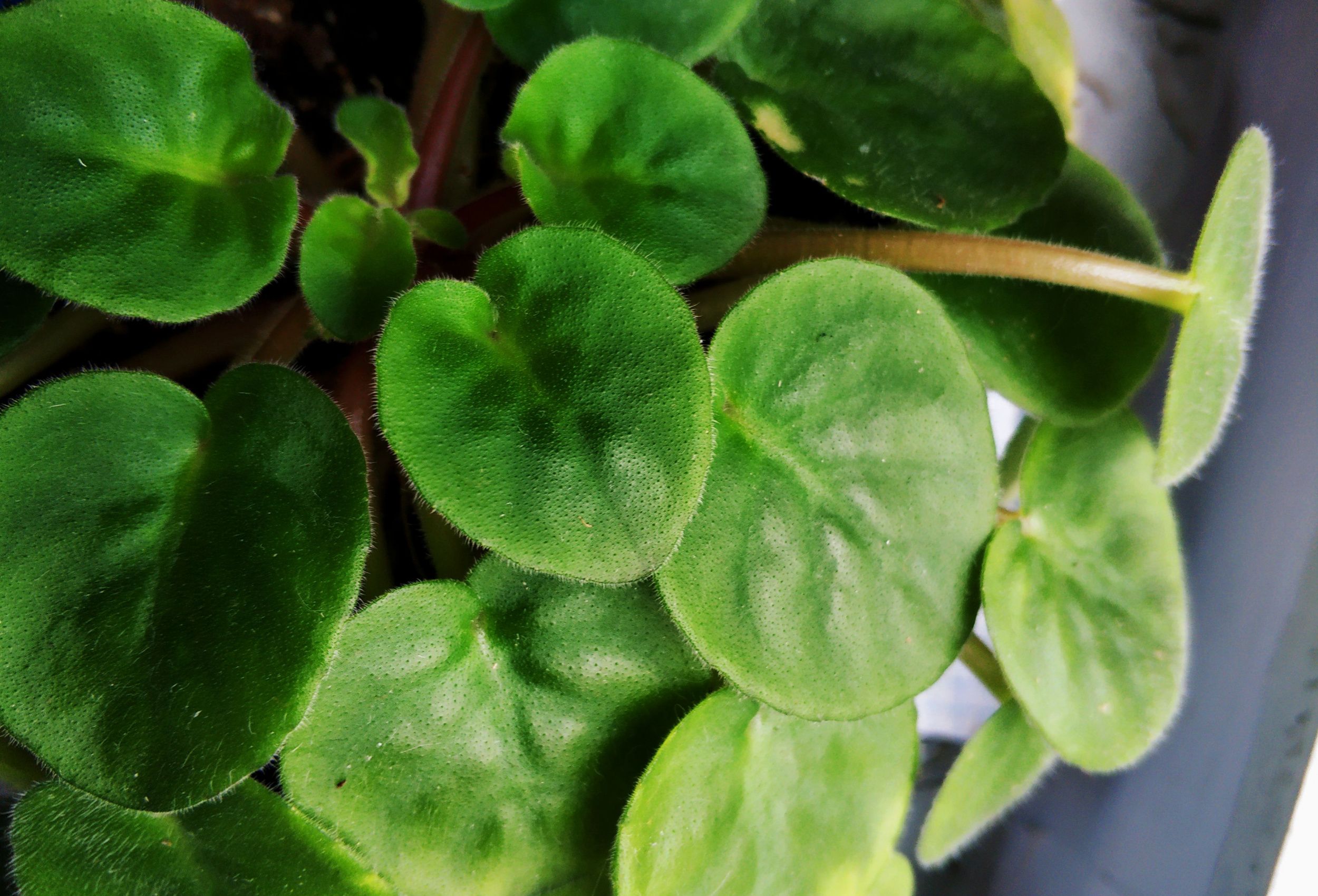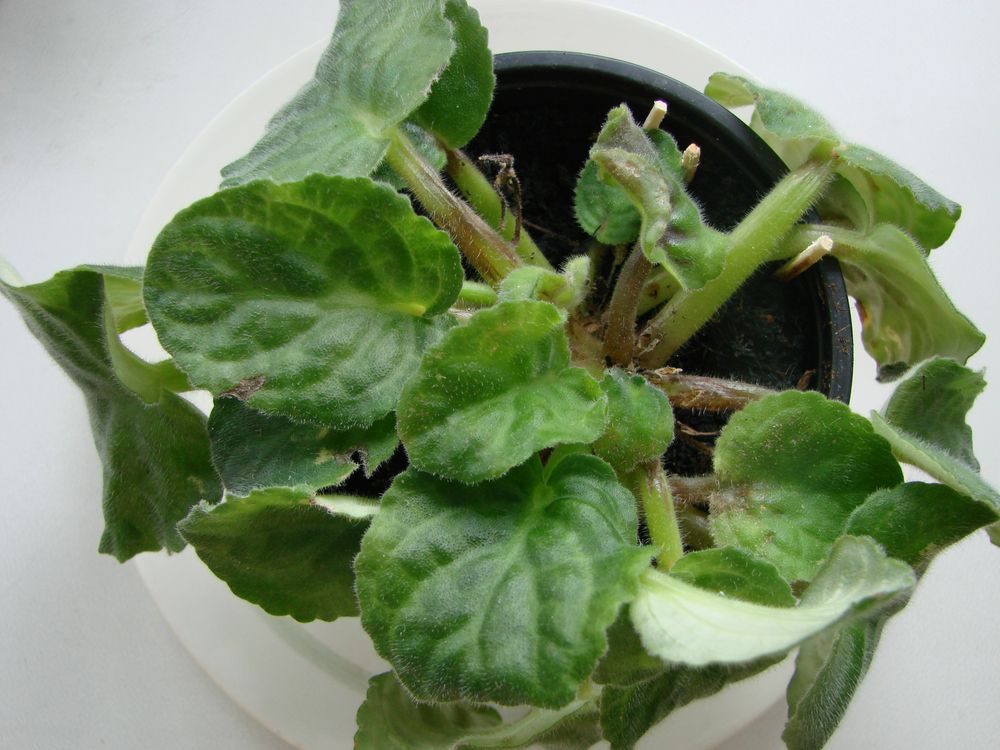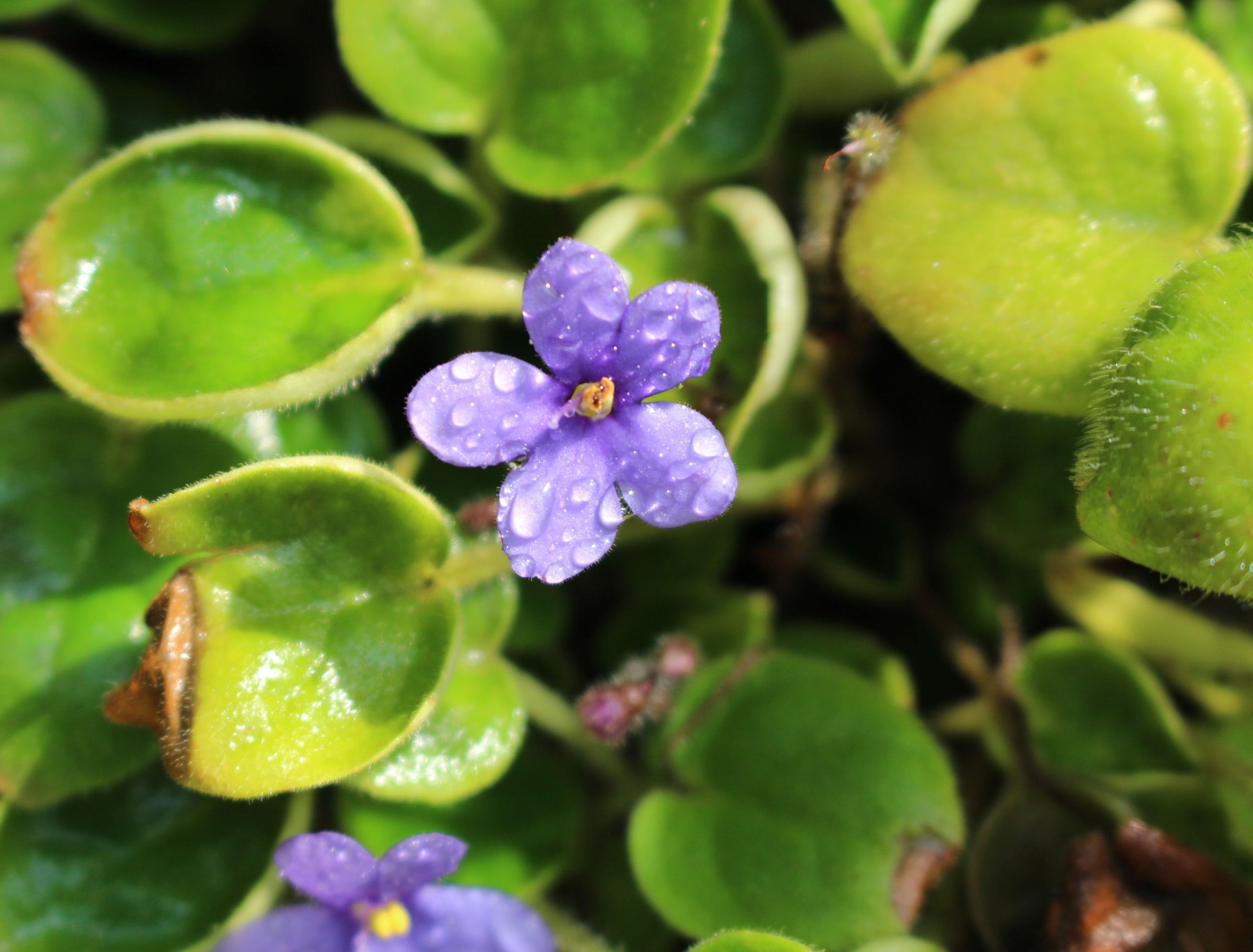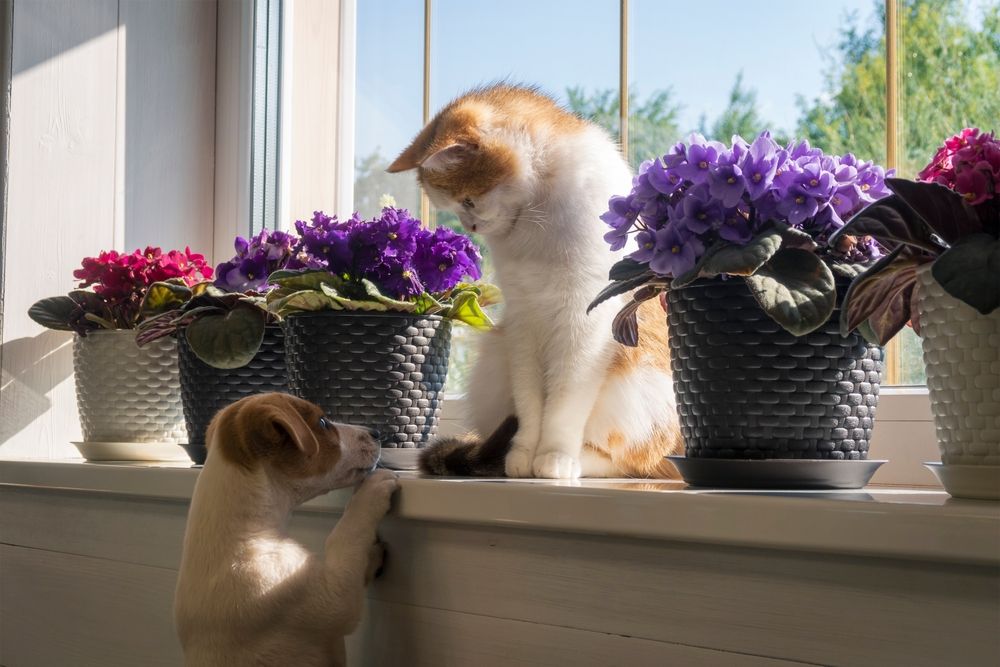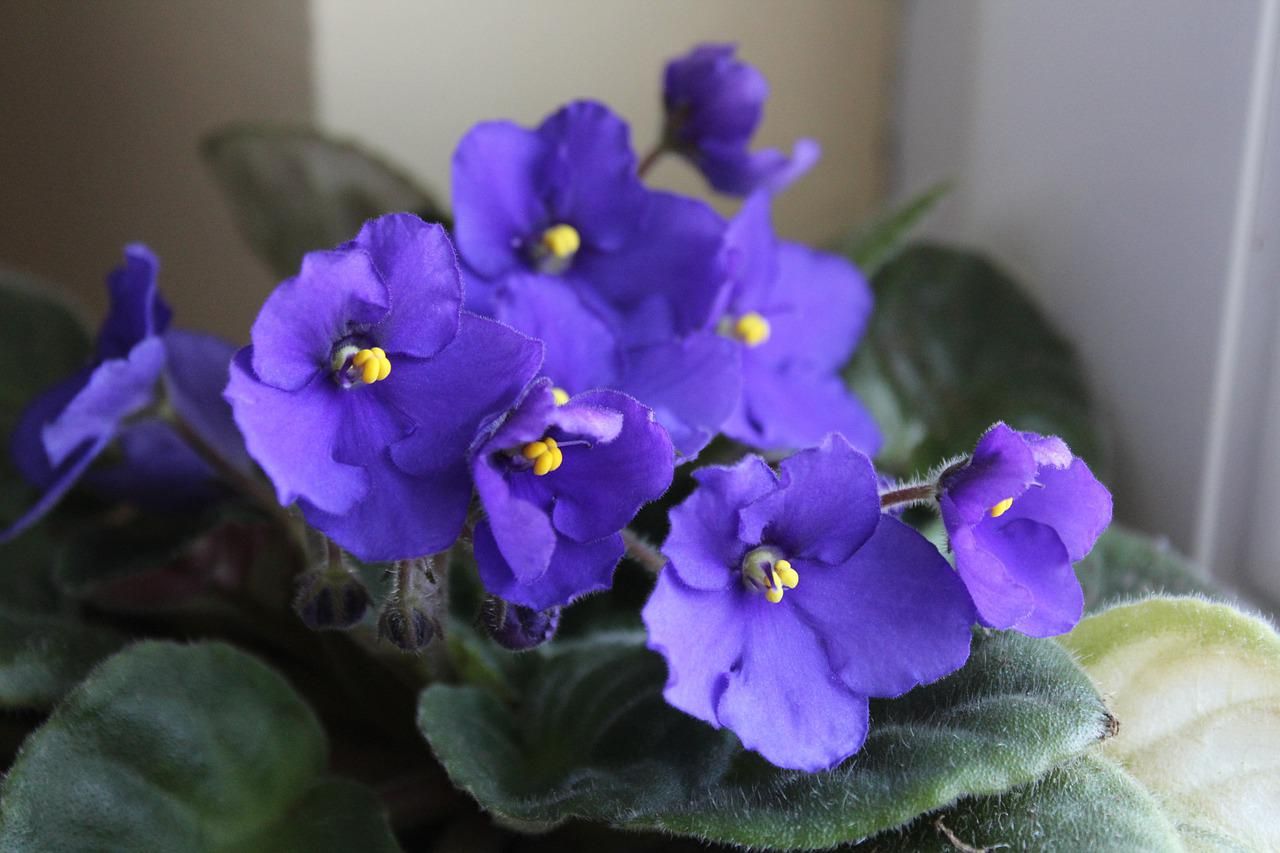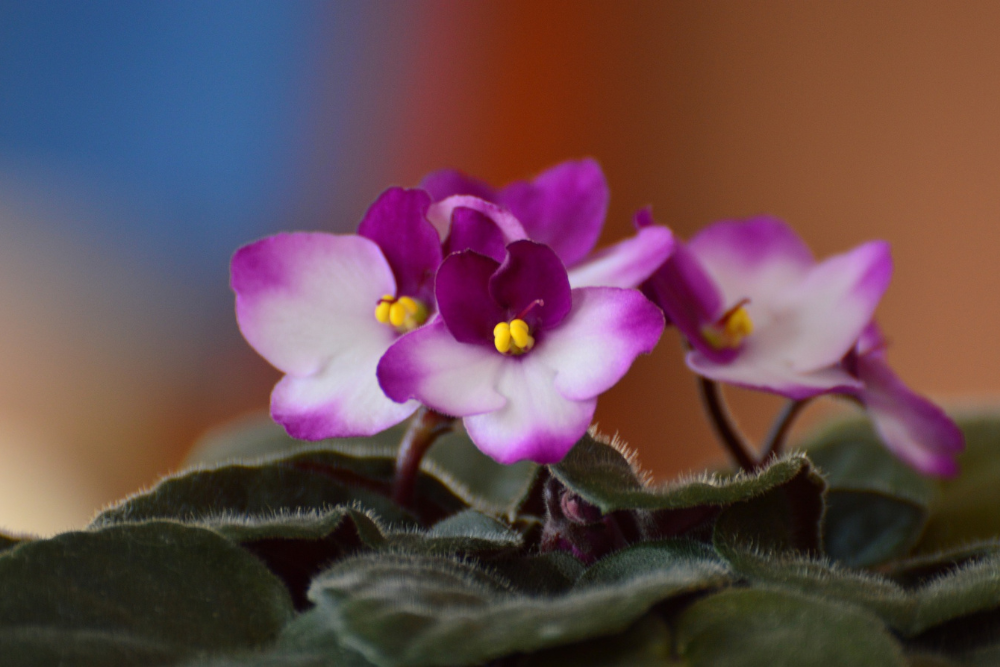Having an African violet in your home is a wonderful way to add color and velvety beauty, but one of the most common issues faced by owners is why their violets are not blooming.
Not seeing flowers may lead you to worry that something might be wrong with your plant, but fortunately, there could be many simple explanations for this issue. These reasons range from light deficiency issues to pest problems. Here are some of the most common reasons African violets fail to bloom and what steps you to take in order to overcome them.
Disease or Pests
Image credits: Michiru13 via Shutterstock
The lack of blooms on your African violet could be because of disease or pests. If your plant has spots on the leaves, appears wilted, or is stunted in growth, it's possible that fungi or insects are causing some damage.
Powdery mildew is a common fungus seen in African violets and causes white patches on the leaf surface. Botrytis blight also causes brown spots and wilting of the blooms. Root rot is a common fungal disease that produces yellowing foliage and stunted growth.
Additionally, insects are problematic for African violets. Aphids suck sap from new growth tips and leave waxy deposits on the leaves. Thrips are small, slender insects that feed on new growth and leave silver scars behind. Whiteflies are also a problem, causing wilting of the leaves and stunted blooms.
Fortunately, there are solutions to help bring your African violet back to bloom glory. If you suspect disease or pests, treat your plant with appropriate fungicides or insecticides. Follow all directions when applying these treatments for the best results.
Improper Watering
Image credits: RukiMedia via Shutterstock
If your African violet is not blooming, improper watering could be to blame. African violets require a special balance of moisture and humidity for proper growth. They prefer to stay evenly moist, with soil that feels mildly damp -- neither too dry nor too wet. Generally, water thoroughly once a week allowing excess water to drain immediately and maintain a humidity of about 40 to 50 percent.
Overwatering leads to root rot, while underwatering causes yellowing leaves and stunted flowers. Avoid getting water on the foliage as much as possible and use room temperature water for best results.
Inadequate Lighting
Image credits: Julia Ar via Shuterstock
If you want your plant to reach its full potential and bloom, then providing adequate lighting is key!
The ideal positioning for an African violet is in bright, indirect light away from direct sunlight. East-facing windows are great because of the softer morning light they provide. Just drape a sheer curtain over the window if necessary to prevent leaf scorch.
Alternatively, you could invest in some grow lights or supplement with artificial lighting during winter months when natural daylight is less abundant.
African violets need eight hours of darkness every night in order to produce the flowering hormone florigen, which is essential for blooming. If you're growing your African violets under lights, do not run them more than 16 hours a day so that your plant gets the darkness it needs for flowering.
Repotting
Image credits: Anita Bozic via Pixabay
Another plausible reason for the lack of flowers may be because the pot it's in is too big. African violets prefer to grow in pots that are about 1/3 of their diameter, and only 2 or 3 inches deep. If you have put your plant into a pot that is larger than this, then it could expend lots of energy on making roots instead of flowers.
To remedy this situation and get your African violet blooming again, consider repotting it into a smaller container. Choose a pot size that is closer to the diameter size of the plant. This helps encourage flowering while still giving the plant enough space to grow roots.
Fertilizing Issues
Image credit: GiniGeo_Photography via Pixabay
African violets need fertilizer to flourish, and without regular feedings they won't have enough nutrients on hand to produce blooms. But you must use the right type of fertilizer in order for them to thrive.
The key is to find a balanced fertilizer that contains nitrogen, phosphorus, and potassium. Look for a 15-20-15 or 20-20-20 fertilizer. Too much nitrogen leads to lots of greenery at the cost of flowers.
Follow the directions on the label when fertilizing your African violet. It's best to feed them just once a week during the growing season with a mild fertilizer specifically designed for African violets. This helps them absorb more nutrients from the soil, giving you show-stopping blooms and healthy foliage for years to come.
Wrong Soil Medium
Image credits: Mikhail Nilov via Pexels
To ensure healthy and vibrant blooms, use a potting mix that promotes growth and encourages root development. A good mix should contain sphagnum peat moss, perlite, and vermiculite -- all of which help promote airflow and water drainage.
Alternatively, get an African violet-specific potting mix from the store. Just combine it with equal parts of perlite to avoid compaction.
It's Bloomin' Time!
There are a few reasons why your African violet is not blooming, from disease or pests to improper watering and inadequate lighting. Provide adequate conditions in order to help your plant reach its full potential and enjoy an abundant number of beautiful blooms. With careful attention to these factors, you are sure to get the most out of your African violet.
If you have additional tips or questions about caring for African violets, leave a comment below, and don't forget to share this with your family and friends!

